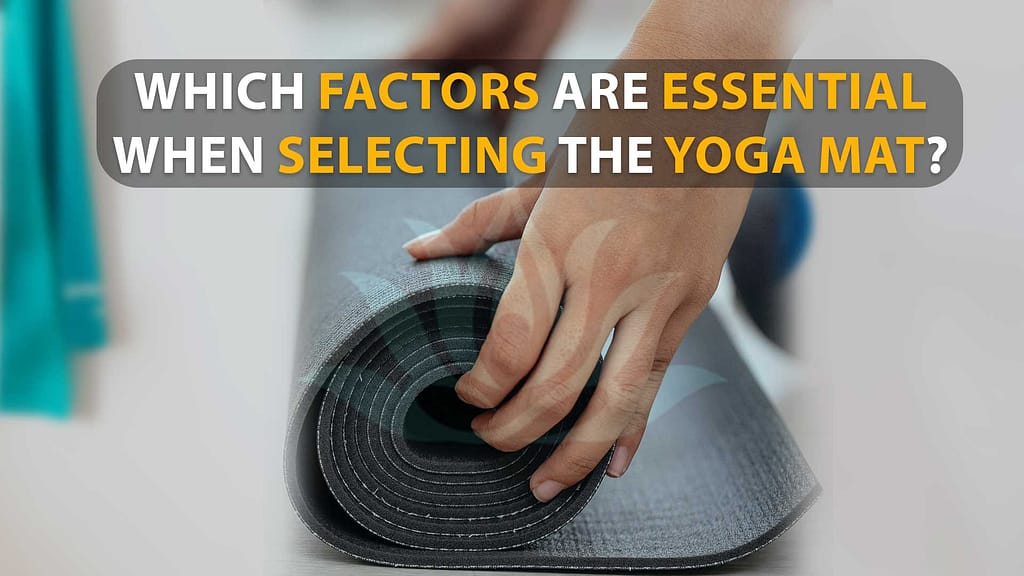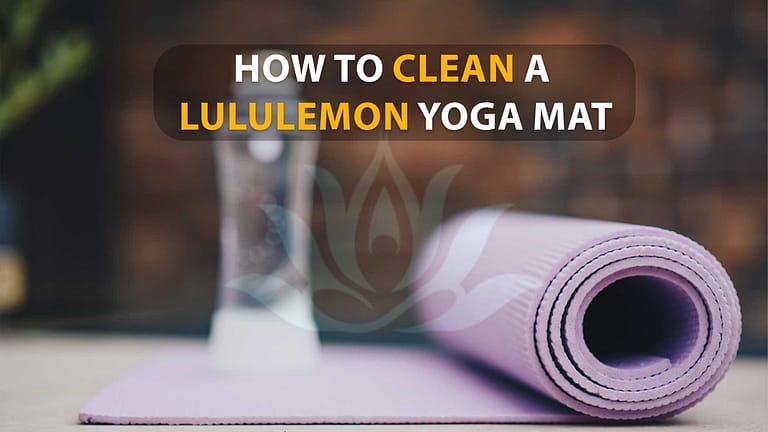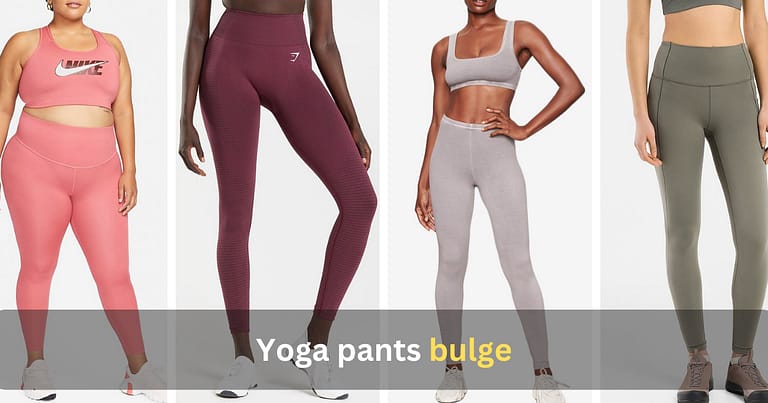What Size Yoga Mat Do I Need? – 8 Important Factors in 2024

What Size Yoga Mat Do I Need?
Average yoga mat size is usually 68 inches long and 24 inches wide. yoga mat is generally between 4 and 5 mm thick. But when someone asked about the best thickness for a yoga mat? You should get a mat that is about 6.6 mm thick.
This gives the mat just enough softness without making it lose its grip. This is the best thickness for a yoga mat for people who do yoga regularly, and both stand and sit on the mat.
What Yoga Mat Size is Best for You?
Choosing a yoga mat is not as easy as it may seem. Yoga mats come in various brands, materials, thicknesses, and sizes, so choosing is challenging. But you won’t be able to ultimately benefit from your daily yoga flows and asanas if you don’t have a cozy, appropriately sized yoga mat.
Why is it essential to have a yoga mat?
Without a yoga mat, you can’t practice yoga properly. Think about sweeping the floor and then waiting for it to dry before you practice yoga, even at home.
No matter where you are, a mat provides a neat training environment. You are more likely to be able to hold your balance for longer when you utilize a yoga mat.
Is a 4mm or 6mm yoga mat better?
Both 4mm and 6mm yoga mats provide a comfortable surface to practice on, and as a result, they are among the most popular options available.
The difference is that yoga mats with a thickness of 6 millimeters give an additional cushioning layer, which may provide some additional support for your joints. As a result, when choosing between these two, I usually advise going with the 6mm option. This is the best size yoga mat in mm.
Read:
Can You Learn Ashtanga Yoga At Home? – Complete Guide In 2023
Which factors are essential when selecting the yoga mat?

1- Your height matters on How Long Should Your Yoga Mat Be?
First and foremost, what is your height?
Select a longer mat if you are taller than usual or have longer legs. Ensure that you have enough space for moving about throughout your practice. Although larger mats are available, the typical length of a yoga mat is around 68 inches.
Some manufacturers produce mats that are 84 inches long, and others produce 72 inches long. It might suit you if you have a height over 6′ long.
You know how annoying this can be if you’ve ever tried lying down in Shavasana with your heels falling over the edge of the mat or, worse yet, with your head dropping off the mat. A yoga mat should be 15–25 cm (7–10 inches) longer than your height for optimal flexibility.
It is recommended to add this extra length to avoid slippage during practice. Although that is a straightforward response, no “one rule” will work for everyone.
But if you have an average height, a good size for a standard yoga mat for you can be typically 68 inches in length and 24 inches in width.
2- Density
The connection between thickness and comfort differs between individuals.
As they offer plenty of padding for your hands and knees during squats, thicker 1/4-inch yoga mats are preferred by most yogis over 1/8 or 1/16-inch mats. This is the best size and thickness of yoga mat. In either case, you should always look for premium yoga mats.
The drawback of utilizing a somewhat thick mat is that it makes you feel less grounded. Some people may become confused by this and lose their equilibrium.
Test your mat’s thickness by attempting to strike Tree Pose on it. As a result, you could start to want thinner or thicker items. When deciding between a thick and thin yoga mat, you must choose between comfort and transportation.
A 14″ thick yoga mat is probably what you’ll choose if storage isn’t a concern for you. But you should choose a 1/8″ or 1/16″ mat if you value the ability to keep your mat anywhere or in anything.
The 1/8″ thick mat can be the ideal choice if neither comfort nor mobility are priorities.
3- Potential Factor
Investing in a budget yoga mat while starting is perfectly acceptable. However, a high-quality cork yoga mat can last you far longer than most if you have the money, and it will ease your early training.
If you start training on inexpensive mats, they tend to be slippery, and you might have problems. But, if your skill level is high enough, you can practice without a mat.
4- Effect on the Environment
Mats should be eco-friendly. Organic materials like cork, jute, and cotton are frequently used to make eco-friendly yoga mats, regarded as preferable (and occasionally better) to standard PVC and foam mats that are bad for the Environment.
The bark of certain trees, particularly Quercus suber, or “cork oak,” is used to make cork yoga mats. On the other hand, foam yoga mats are composed of petroleum, a non-biodegradable material processed to make gasoline.
Petroleum cannot be effectively recycled and is not biodegradable. Burning also releases pollutants. Foam yoga blocks are, therefore, dangerous for the Environment.
Read:
Does Yin Yoga Burn Calories? Benefits In 2023
5- Rubbery texture

For many people, a yoga mat’s firmness may make or break their experience. While using a new mat, you notice it right away. Or a mat’s firmness to applied pressure is something to keep in mind because it might significantly help you (or quickly prevent you).
But before using an absorbent mat, remember that a soft yoga mat won’t help if you practice on a carpet. This is because adding a flexible mat on top of the carpet, which is already soft, won’t support you.
It would help to use a more complex yoga mat when practicing on a carpet (less spongy). PVC is a common material for spongy yoga mats—a good choice for beginners.
6- Budget
There is no fixed budget for yoga supplies. Simple 1/8-inch PVC mats are often affordable and accessible. Don’t be discouraged from beginning your yoga adventure with anything essential; they do their jobs fine.
Yoga mats consisting of materials like cork, jute, and cotton that are 1/4 inch thick are available as you climb the ladder to more expensive alternatives.
7- Layout
Never use the looks of a yoga item as a selling pitch until you’ve looked at all the other aspects. Picking a yoga mat based on style is enjoyable! Thus, once you’ve selected the ideal yoga mat for your needs, seek a pattern that fits your personality.
8- Accessibility
Yoga mats should be comfortable to use. Depending on where you practice, you could prefer one yoga mat over another.
More specifically, a small, lightweight travel mat that folds will be easy for you to pack and carry to the gym if you practice yoga away from home. You can store each type of yoga mat easily at home.
Read:
Can Beginners Do Ashtanga Yoga? Complete Guide In 2023
Conclusion
It depends on your needs and your height. If you are under 5 feet 7 inches, a yoga mat of 68–71 inches (172-180 cm) is suitable (170cm). If you are tall, you need to consider investing in a yoga mat that is 74 inches (188 cm) long or longer.
This is a quick response to the question of what size yoga mat you require (the taller you are, the longer the yoga mat).
FAQs: what length yoga mat do i need?
Q: Dimensions of the popular yoga mats?
Average yoga mat length 68 inches and 24 inches wide, and 1/8 inch thick.
Q: What is the best color for a yoga mat?
A blue yoga mat might help you pay more attention to the conversation and do each pose as well as possible.
Q: Can I use hand sanitizer to clean the yoga mat?
It’s best to avoid sanitizers and all-purpose cleaners that contain bleach, alcohol, and other ingredients that could hurt the skin.
Q: Is a PVC mat good for yoga?
polyvinyl chloride (PVC) is used to make most yoga mats. This plastic is poisonous when it is made and when it is used.
Video Guide: importance of a yoga mat
Read Also
- Is Meditation A Form Of Worship? – Difference Between Worship And Meditation In 2023
- Is It Better To Meditate In Darkness? – Treatment With Dark Meditation In 2023
- Should I Do Meditation Before Or After Yoga ? – Suggestions For Improving Meditation In 2023
- Can Pranayama Cause Chest Pain? – 5 Causes Of Chest Pain Due To Pranayama In 2023
- Tingling Sensation Between Eyebrows During Meditation – Third Eye Sensation In 2023
- How To Clean A Lululemon Yoga Mat? – 5 Benefits Of Cleaning Lululemon Yoga Mat





